If you’re familiar with soil science, you know about cation exchange capacity (CEC). If not, it may sound like gibberish. But if you care about growing a beautiful lawn or a thriving garden, cation exchange capacity is definitely something you'll want to know about. Here's a breakdown on how you can apply this concept to improve your soil, and thus, improve plant growth.
Chemistry 101
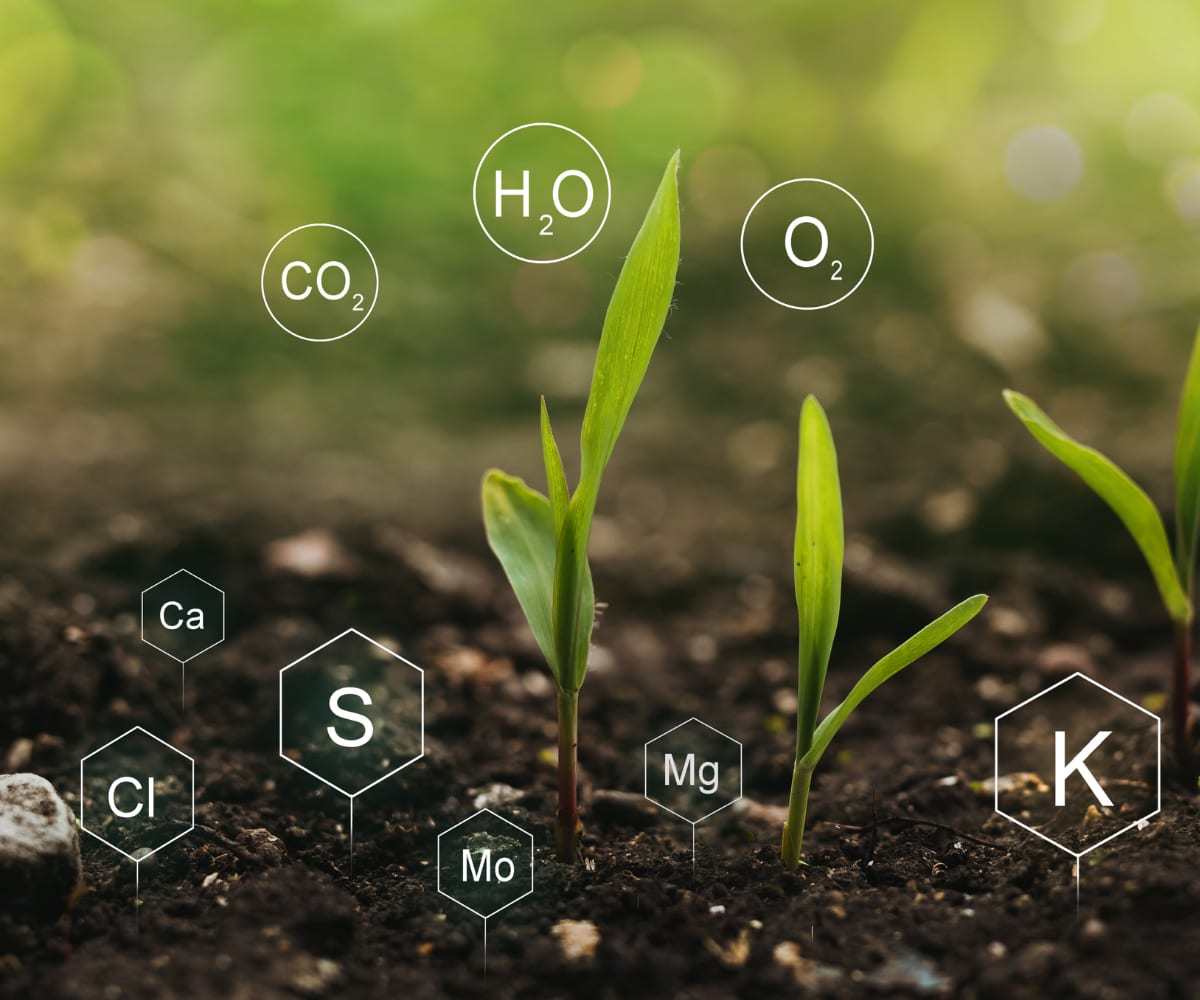
Cation exchange capacity (CEC) is how you measure the ability of soil to hold and release the elements needed for plant nutrition. To better understand CEC, let’s start with some basic chemistry.
Everything is made of atoms. In a perfect world, atoms are made of positively charged protons in their nucleus and an equal number of negatively charged electrons. The world is not perfect, however, and atoms can lose electrons or even gain extra ones. If an element loses electrons, it becomes positively charged. In this state, it is known as a cation (pronounced cat-eye-on). Conversely, if it gains extra electrons, it becomes negatively charged. In this state, it is known as an anion (pronounced ann-eye-on). The important thing to remember here is what you once learned about basic electricity or magnetism: opposite charges attract.
Acidity and Alkalinity
The acidity or alkalinity of soil (pH) is also a major parameter involving cation exchange. Cations (positively charged particles) can be divided into two categories: acidic, or acid-forming cations, and basic, or alkaline-forming cations.
Hydrogen and aluminum cations, for instance, are acid-forming cations, and neither of them are plant nutrients. A soil with high levels of hydrogen and aluminum is acidic, meaning it has a low pH. The cations that we are mainly concerned with in soil are calcium, magnesium, potassium and sodium. They are all basic cations and soil nutrients plants need. For example, potassium encourages root growth.
Cations in the Soil
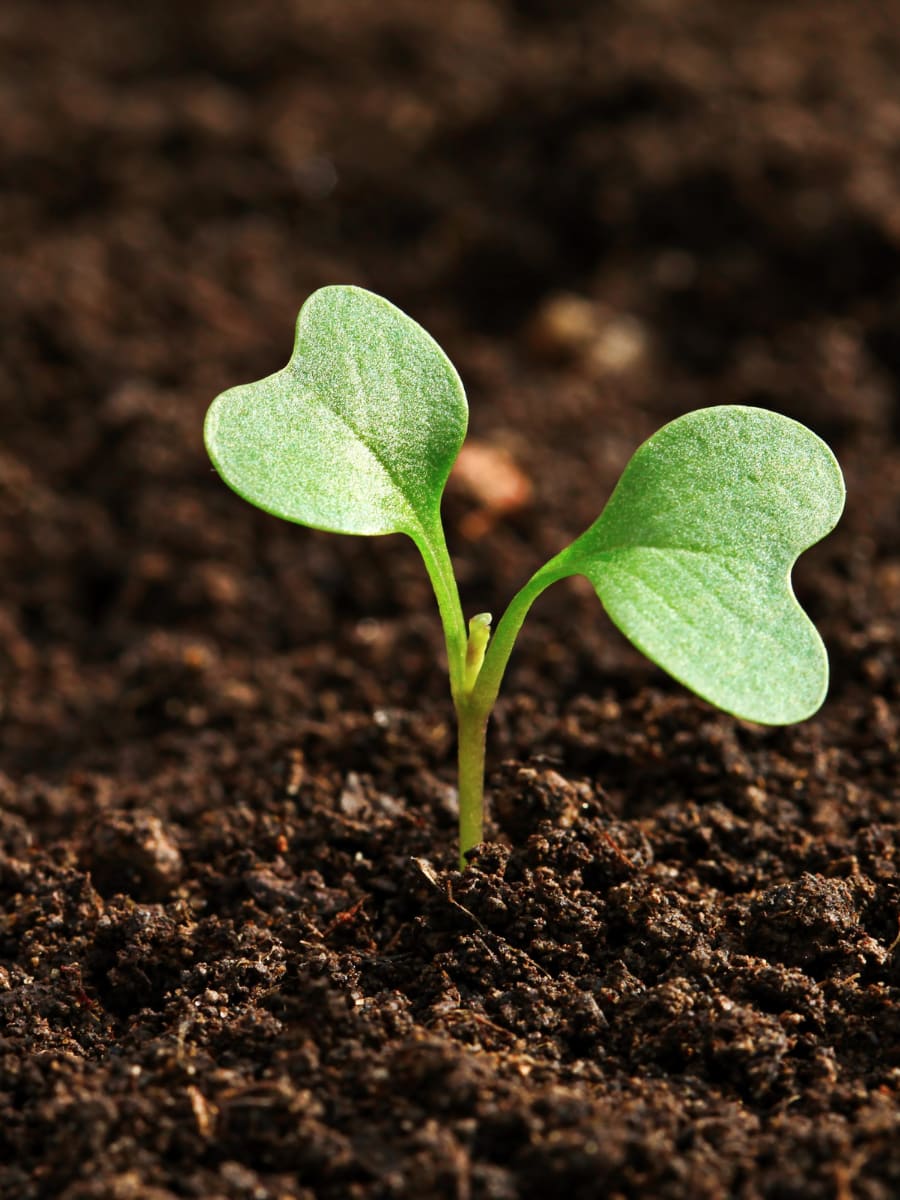
So, how do cations work in the soil? Both acidic and basic cations can be adsorbed into the soil. You read that right: adsorbed with a “d,” not absorbed with a “b." What's the difference?
When you absorb something, you take it in or assimilate it. A sponge can absorb water, and a cast iron skillet can absorb heat.
Adsorb, on the other hand, means to gather on a surface in a condensed layer. All of the nutrients in the soil need to be held there somehow, or they will just wash away when you water the garden or get a good rainstorm. Cations allow the nutrients to be adsorbed and available for plants to use them.
Clay particles almost always have a negative charge, so they attract and hold (adsorb) positively charged elements. Organic matter found in soil has both positive and negative charges, so it can adsorb both cations and anions.
Soil CEC
Now that we know what a cation is, what about cation exchange capacity? Soil particles have negatively charged sites that attract and hold positively charged cations. The measurement of this is known as the cation exchange capacity (CEC). It is the measure of how many negatively charged sites are available in your soil, as determined through a soil test.
The “exchange” basically works like this: plant roots and soil microorganisms give off positively charged hydrogen ions. If these hydrogen ions can surround the nutrient cation and get closer to the negatively charged exchange site, the hydrogen ions will fill the exchange site and neutralize the charge. This frees the nutrient cation of its static bond, and it can then be taken up by a plant.
The CEC values of soils can vary widely and be an indicator of soil fertility. Sandy soils that are low in organic matter have a low CEC, while clay soils containing a lot of organic matter have a high CEC. Typically, the more organic matter soil has, the higher its CEC. And a higher CEC means more nutrients get to your plants, which leads to lush, green lawns and thriving, productive gardens!
CEC, Humus and Our Products
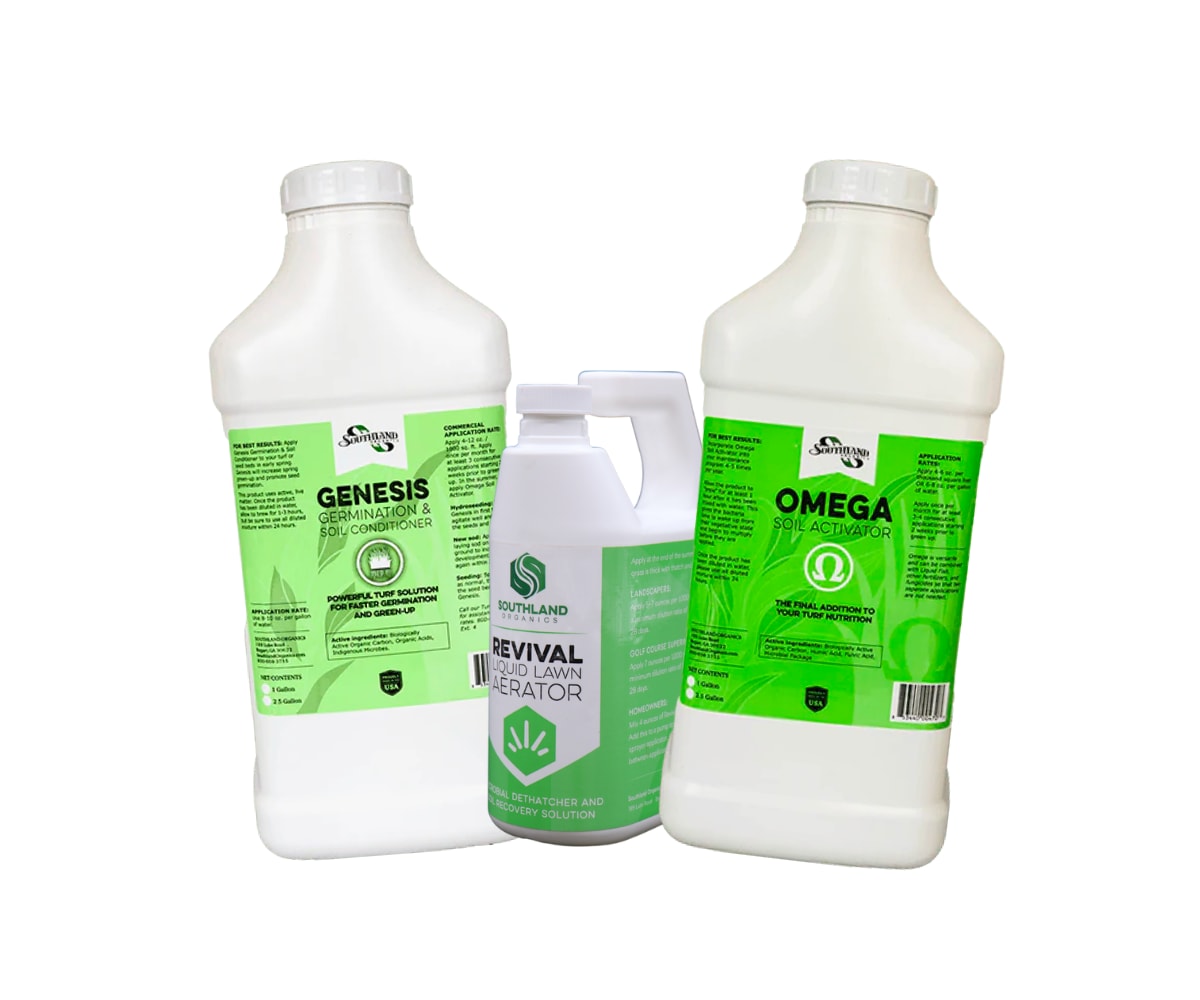
Having a high CEC in your lawn or garden sounds pretty good. But how can you increase CEC to help improve your soil? One easy way is by adding humus. Humus is rich organic matter, and beneficial microbes love it. It’s naturally found in most soils, but not all soil has enough of it to keep most plants happy. You can put humus in your soil by adding organic matter and having healthy soil microbes to break it down, or add another soil that contains large amounts of humus and humic acids.
Our solution to adding humus and increasing CEC in your soil is applying naturally derived, liquid microbial products. These products, like Genesis Soil Conditioner, Omega Soil Activator, Revival Liquid Lawn Aerator and more, can be easily sprayed on your lawn and garden to increase cation exchange capacity, thus allowing your grass and plants to uptake more nutrients and be healthier. Plus, they are safe for people, pets and the planet.
Learn more about our natural lawn and garden treatments.
CEC and the Elements
In the early 20th century, Dr. William Albrecht and his associates performed studies at the University of Missouri regarding different ratios of nutrient cations, specifically calcium, magnesium, potassium and sodium. They came to the conclusion that the strongest, healthiest and most nutritious crops were grown where the soil's CEC was saturated to about 65% calcium, 15% magnesium, 4% potassium and between 1% and 5% sodium. This ratio not only provided luxury levels of these nutrients to the crop and to the soil life, but it strongly affected the soil texture and pH. The percentage of the CEC that a particular cation occupies is also known as the base saturation percentage, or percent of base saturation. These percentages are not universal and can vary widely due to soil texture and other factors.
The calcium to magnesium ratio is a major factor in determining the level of soil compaction. Looser soils tend to have more calcium, and tighter soils tend to have more magnesium. Soil high in calcium tends to have more oxygen, allows water to drain more freely and better supports aerobic breakdown of organic matter. High magnesium soil, on the other hand, tends to have less oxygen, drains water more slowly and decomposes organic matter poorly, if at all.
In soils where magnesium is higher than calcium, organic matter may ferment and produce alcohol—and perhaps even formaldehyde, both of which are preservatives. This can provide a good indicator: If you till up cornstalks from last year's harvest, and they are still shiny and green, you likely have soil with much more magnesium than calcium.
There are also serious consequences if the balance goes too far the other way. If the calcium level gets too high, the soil will lose its necessary granulation and structure, and the high levels of calcium will interfere with the availability of other nutrients. If you get the ratio just right for your particular soil, you can drive over the garden and not have a problem with soil compaction. It's also important to consider nitrogen—Plants use nitrogen to build amino acids, which then build plant proteins.
The desired ratio depends on your type of soil. For instance, in a heavy clay soil, you may want 70% calcium and 10% magnesium. The ratio is tilted toward calcium to loosen up the soil. If your soil is loose and sandy, 60% calcium and 20% magnesium will help tighten up the soil and improve its ability to hold water. Notice that the total of these ratios adds up to 80%. This leaves about 20% of the CEC open for other elements. Typically about 4% would be used for potassium and 1% to 3% for sodium, leaving 4% or 5% to be filled with other bases, such as copper and zinc or iron and manganese. The remainder will be occupied by exchangeable hydrogen. This causes the pH of the soil to automatically stabilize around 6.4. This is ideal pH for organic/biological agriculture, and this is also the pH of sap in a healthy plant.
What are colloids?
Clay is made up of such small particles that they are actually difficult to see with most microscopes. When mixed in water, they may never settle out and just remain suspended in the water. They do not get dissolved in water, but suspended. A particle that remains suspended in water but not dissolved is known as a colloid. When organic matter breaks down, it forms smaller and smaller particles until it can be broken down no further and still be considered organic matter. At that point, it is called humus. Humus is a colloid; when it is mixed into water, it will not readily settle out or float to the top.
Since colloids are so small, billions of colloidal particles can fit into a very small space. Since each of these particles has its own exterior surface, they have a very large surface area per unit volume or by weight. Some clays, such as vermiculite, have a surface area of around 800 square meters per gram, or over 200,000 square feet per ounce. The surface area of fully developed humus is about the same or even higher. Other clays have a much lower surface area, and some clays actually have a very low CEC, while humus always has a high exchange capacity.
Mineral Soils and Clay
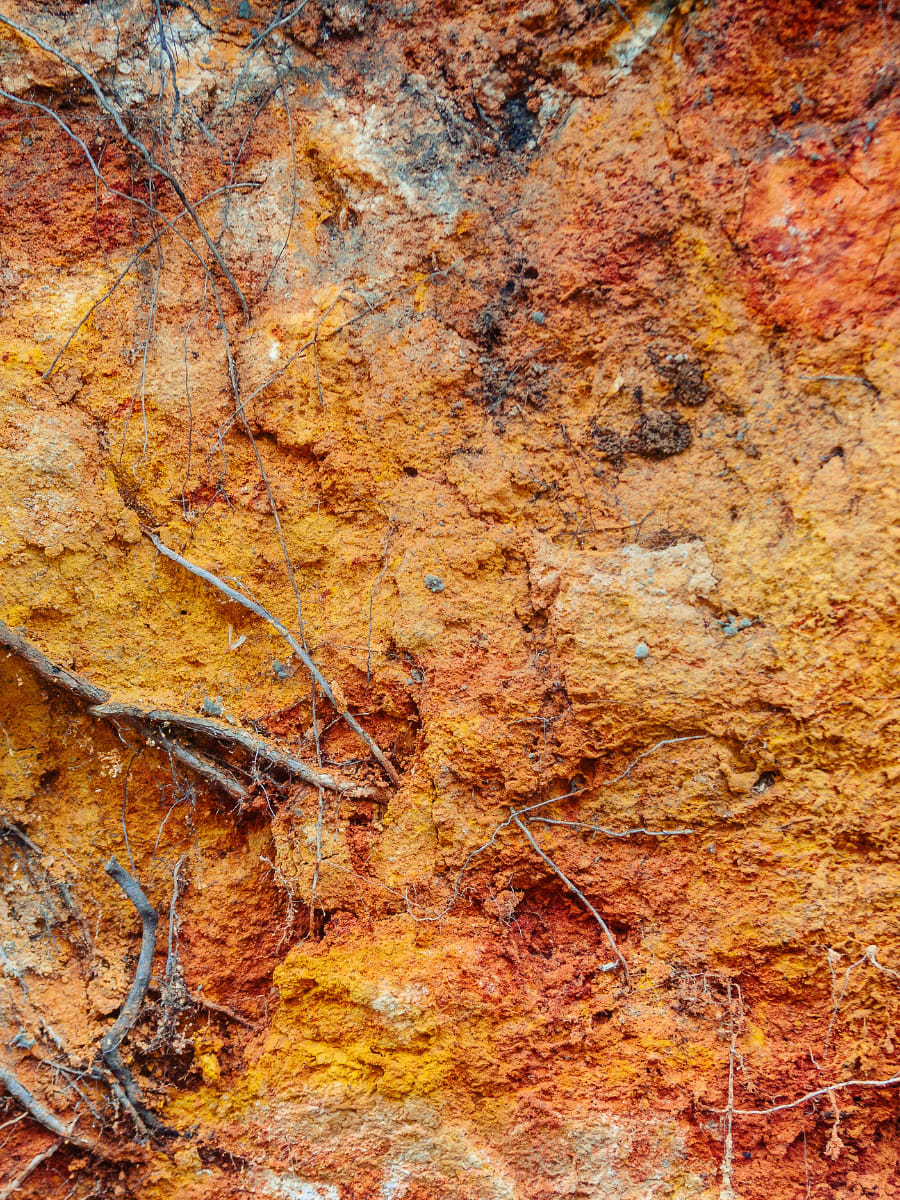
The breakdown of rock over time is what makes up mineral soils. Years of heating and cooling, freezing and thawing, erosion caused by wind and water, acid rain and biological activity break down rock into finer and finer particles. Eventually, the particles get so small that some of them re-crystallize into tiny flat platelets. They become colloidal clay, made up mostly of silica and alumina.
The age of a soil usually determines how much clay it contains. The more rainfall a soil gets, the faster it breaks down into clay. Arid regions are mostly sandy and rocky soil, unless they have areas of ancient or "fossil" clay. The bottoms of rivers in arid regions often have more clay because small clay particles easily wash into rivers and streams from areas without vegetation cover. Clays tend to stick together in microscopic layers. Newly formed clays are often made up of layers of silica and alumina sandwiched between potassium or iron.
On young clays, the only available cation exchange sites are on the edges. As the clays age, the filling between each layer is worn away by acid rain, microbes or plant roots, opening up more and more negatively charged exchange sites and increasing CEC. Eventually, these clays consist of tiny layers of silica and alumina, each separated by a thin film of water. These are the expanding clays. When they get wet, they swell, and when they dry out, they shrink and crack. Because these older expanding clays have exchange sites available deep between their layers and not just on the edges, they have a much greater CEC than freshly formed clays. The space between the layers of these expanding clays gets filled back in over millions of years with hydrated aluminum oxide. As this happens, they lose their exchange capacity again—this time forever.
In the southern half of the United States, the age of the clay fraction of the soil is younger in the west than the east. The arid Southwest, from California to western Texas, has largely young soils. They contain a lot of sand and gravel and some young clays without a lot of exchange capacity, making them low CEC soils. The mid-south, from West Central Texas and above into Oklahoma, Kansas and Nebraska, contains well-developed clays and high CEC soils. Continuing into the Southeast, there is heavier rainfall, older soils and generally aged clays that have lost much of their ability to exchange cations. Across Louisiana, Mississippi, Alabama and Georgia, the clays have been rained on and leached with no remaining reserves of calcium and magnesium. The northern states, from Washington in the west to Pennsylvania and New York in the east, were largely covered with glaciers as recently as 10,000 years ago. This brought them a fresh supply of minerals, and clays with a high exchange capacity are common.
More on Humus
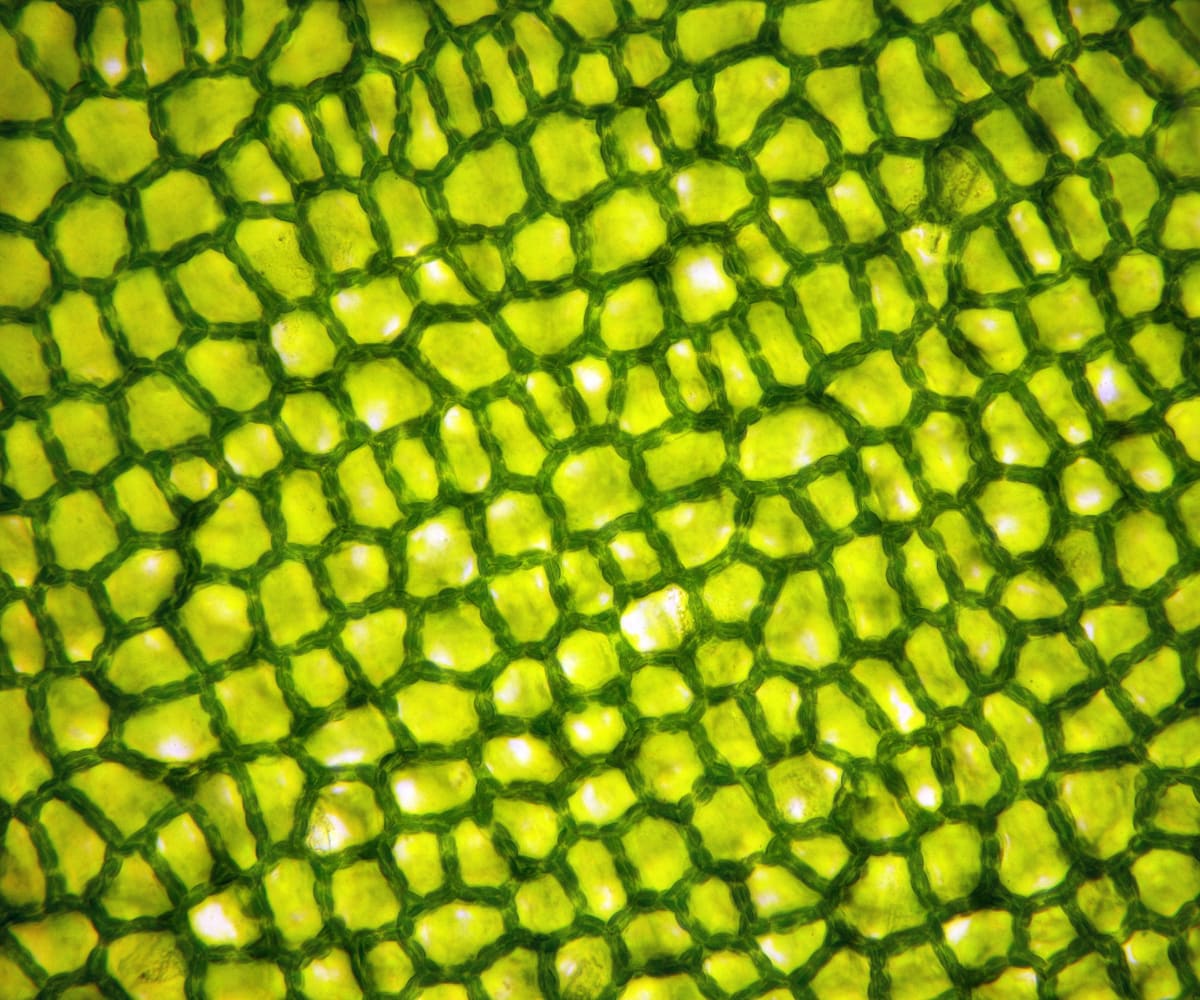
Any area that gets more rainfall tends to grow more vegetation. The portion of the soil that is made up of decaying organic matter usually increases in such areas. The breakdown of organic matter into humus is dependent on moisture, temperature and availability of oxygen. As these parameters increase, so does the rate at which organic matter breaks down. Moisture and oxygen being equal, colder upper latitudes tend to build up more organic matter in the soil than hotter southern climates.
One extreme, for instance, is the tropics where organic matter breaks down and disappears very quickly. The opposite extreme would be the peat beds and deep muck soils found in some northern states. There are always exceptions, such as the Everglades of Florida. The lack of oxygen combined with stagnant swamp water has formed the largest peat beds in the world. Another example is the area around Sacramento, California. When European settlers first farmed the delta there, they found muck soils 100 feet deep.
Organic matter straight from the compost, manure pile or the remains of last year’s crops won't have much exchange capacity until it breaks down into humus. The formation of humus requires the action of soil microorganisms, earthworms, fungi and insects. When none of these organisms can use the organic material as food anymore, it has become a very small but very complex carbon structure. In this form, it can hold and release many times its weight in water and plant nutrients. The more humus found in a soil, the greater the CEC. The only way to increase humus in your soil is by adding organic matter and having healthy soil life to break it down, or to add a soil that contains large amounts of humus and humic acids. Humus and humic acids have an exchange capacity greater than even the highest CEC clays.
Understanding Cation Exchange
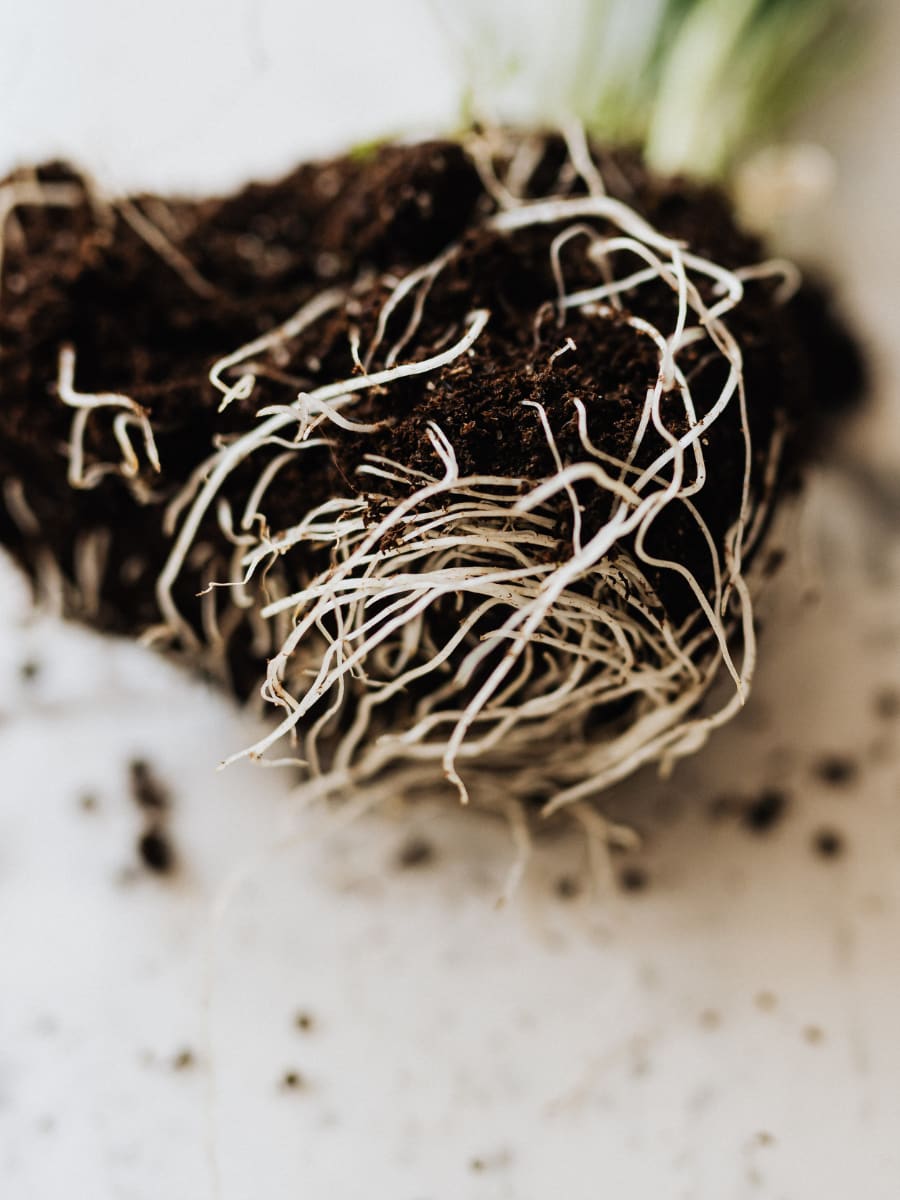
Alkaline nutrients are only held on the surface (adsorbed) by a weak, static electrical charge. They are actually being moved around constantly, pulled and pushed by other charged particles (ions) in the soil solution around them.
Plant roots and soil microorganisms exude or give off positively charged hydrogen ions. If these hydrogen ions can surround the nutrient cation and get closer to the negatively charged exchange site, the hydrogen ions will fill the exchange site and neutralize the charge. This frees the nutrient cation of its static bond, and it can then be taken up by a plant or microorganism.
The way this works specifically with plant roots is that the plant roots expire or breathe out carbon dioxide (CO2) into the soil. CO2 combines with water in the soil and forms carbonic acid. The hydrogen ions from the carbonic acid replace the cation nutrient on the exchange site. A calcium ion held to an exchange site has a double-positive charge, which is written Ca++.
When enough H+ ions surround the calcium ion to the point that some of them get closer to the exchange site than the Ca++ ion, then two H+ ions will replace the Ca++ ion, and the plant is free to take the Ca++ up as a nutrient.
Measuring CEC
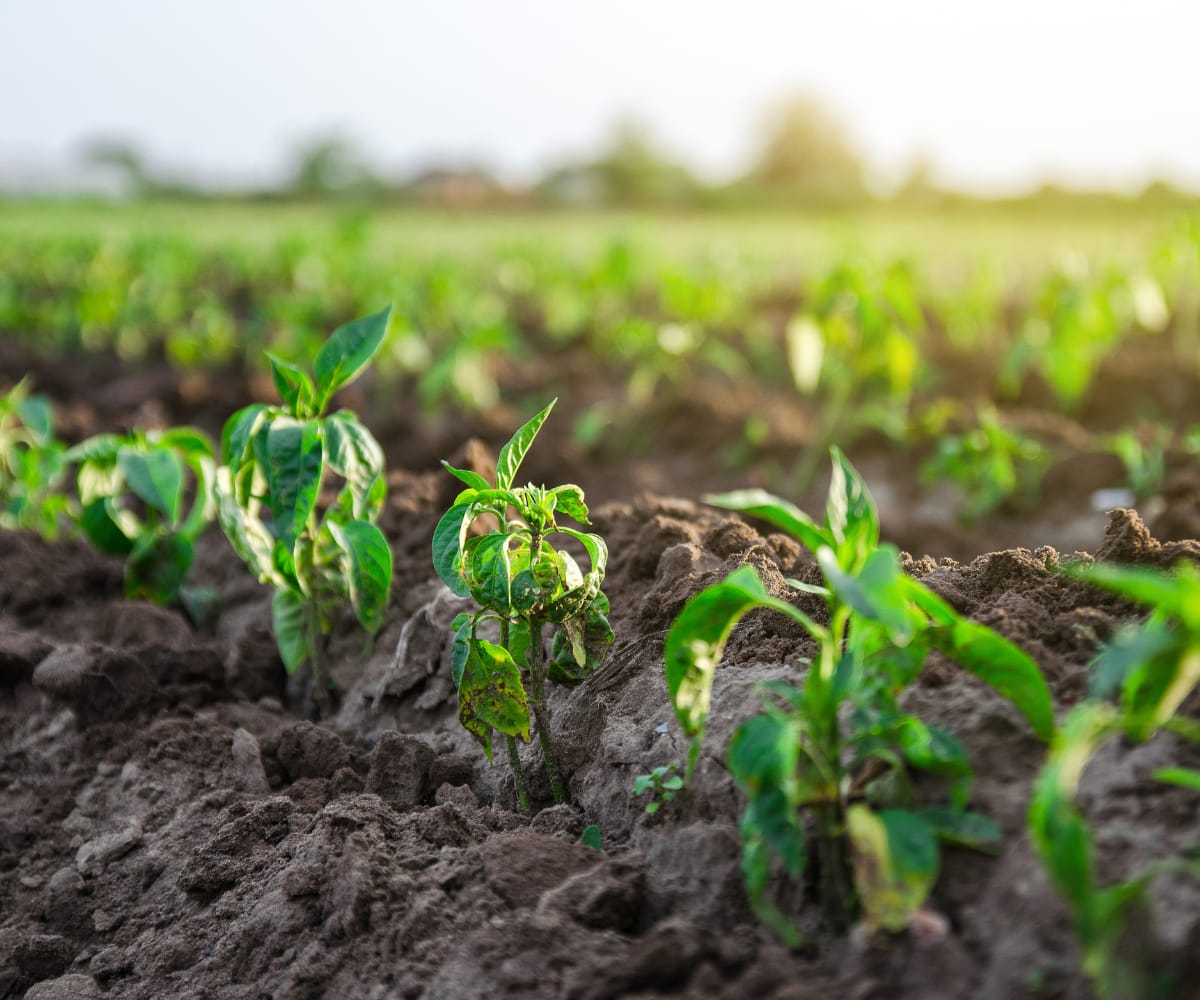
The scale for measuring the cation exchange capacity is milligram equivalents, abbreviated ME or meq. A milligram is 1/1000th of a gram, but on this measurement scale, they specifically mean a milligram of H+ exchangeable hydrogen.
The idea is to compare 1 milligram of H+ hydrogen to 100 grams of soil. If every exchange site on that 100 grams of soil could be filled by that 1 milligram of H+, then the soil would have a CEC of 1 ME. 100 grams of soil with a CEC of 1 ME could have every negative exchange site filled up or neutralized by milligram of H+ exchangeable hydrogen. If it had a CEC of 2 ME, it would then require 2 milligrams of hydrogen. If its CEC was 120 ME, it would take 120 milligrams of H+ to fill up all the exchange sites.
The "equivalent" part of ME means that other positively charged ions could be substituted for the hydrogen. Different elements will fill the sites at different rates. If all of the sites were empty in that 100 grams of soil, and that soil had a CEC of 1 ME, then 20 milligrams of calcium (Ca++), 12 milligrams of magnesium (Mg++) or 39 milligrams of potassium (K+) would be needed to fill the same exchange sites as 1 milligram of H+.
It takes 20 times as much calcium as hydrogen to fill the same receptor sites. This is because calcium has an atomic weight of 40, while hydrogen has an atomic weight of 1. One atom of calcium weighs 40 times as much as one atom of hydrogen.
Contact Us
We would love to help you improve your lawn and garden naturally by adding humate and increasing CEC. If you have any questions, reach out to us at success@southlandorganics.com or 800-608-3755. Don’t forget to subscribe to our YouTube channel for more helpful lawn and garden information.






